What is the highest a fever can go. Understanding Fever: How High is Too High?
What is the highest a fever can go? How high is too high for a fever? Explore the details on normal body temperature, fever causes, and safe fever management.
Fever Basics: Understanding Normal Body Temperature
Normal body temperature can vary throughout the day and for different individuals. In general, a child is considered to have a fever when their temperature reaches:
- 100.4°F (38°C) or higher when measured rectally
- 99.5°F (37.5°C) or higher when measured orally
- 99°F (37.2°C) or higher when measured under the arm
For adults, a fever is usually considered to be a temperature above 99°F to 99.5°F (37.2°C to 37.5°C), depending on the time of day. Factors like physical activity, emotions, and the menstrual cycle can also affect body temperature.
When is a Fever Considered Too High?
Fevers up to 105°F (40.6°C) are generally not considered dangerously high, especially in children with mild viral illnesses. Brain damage from fever typically occurs only when the temperature exceeds 107.6°F (42°C). Untreated infections rarely cause fevers higher than 105°F (40.6°C) unless the child is overdressed or in a hot environment.

Febrile Seizures
Febrile seizures can occur in some children with high fevers, but these are usually brief and do not indicate a more serious condition like epilepsy. Febrile seizures are not harmful and do not cause permanent damage.
Causes of Fever
Fever can be caused by a wide variety of infections and illnesses, including:
- Bacterial infections like osteomyelitis, appendicitis, or meningitis
- Viral infections like colds, flu, mononucleosis, or gastroenteritis
- Urinary tract infections
- Autoimmune or inflammatory disorders like arthritis or Crohn’s disease
- Some cancers, such as Hodgkin’s disease or leukemia
In some cases, fevers may also be caused by medications, blood clots, or even a simple viral infection.
Managing Fever at Home
If the fever is mild and there are no other concerning symptoms, treatment may not be necessary. Providing fluids, rest, and allowing the body to fight the infection is often the best approach. However, if the person is uncomfortable, vomiting, dehydrated, or not sleeping well, steps can be taken to help lower the fever, such as:
- Removing excess clothing or blankets
- Giving lukewarm baths or sponge baths (after fever-reducing medication is given)
- Avoiding cold baths, ice, or alcohol rubs, which can actually raise the core body temperature
Fever-reducing medications like acetaminophen (Tylenol) or ibuprofen (Advil, Motrin) can also be used to help bring down a high fever. It’s important to follow dosage instructions based on the person’s weight.
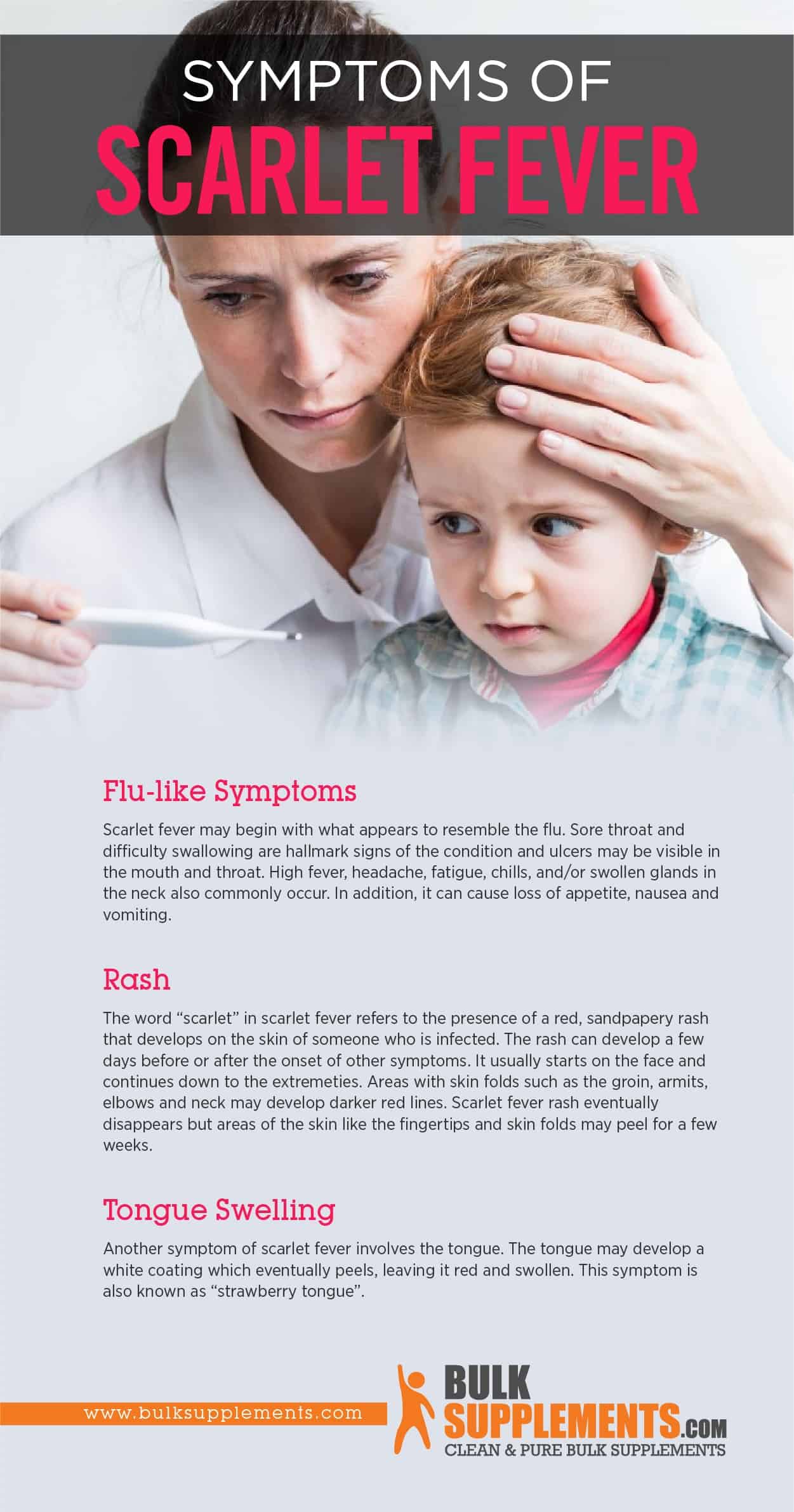
When to Seek Medical Attention
Most fevers, even high ones, are not a cause for alarm, especially in children with mild viral illnesses. However, there are some situations where medical attention may be warranted, such as:
- Fever in an infant under 3 months old
- Fever accompanied by severe symptoms like lethargy, difficulty breathing, or a rash
- Fever that lasts for more than a few days without a clear cause
- Fever in someone with a weakened immune system
In these cases, it’s important to contact a healthcare provider for evaluation and treatment recommendations.
Fever Management Tips
Here are some additional tips for managing fever at home:
- Monitor the fever closely and keep track of the temperature readings
- Avoid bundling up someone with a fever, as this can actually raise their temperature
- Ensure the person is drinking plenty of fluids to stay hydrated
- Get plenty of rest
- Use fever-reducing medications as directed, but don’t try to completely eliminate the fever
Remember, the goal is to make the person more comfortable, not necessarily to bring the fever down to a normal level. Fevers are often a sign that the body is fighting an infection, and they play an important role in the immune response.

Conclusion
Fevers can be concerning, but it’s important to understand that they are a natural and often necessary response to infection or illness. In most cases, fevers under 105°F (40.6°C) are not dangerously high, and can be managed at home with rest, fluids, and fever-reducing medications as needed. However, certain types of fevers, such as those in infants or those accompanied by severe symptoms, may require medical attention. By understanding the normal range of body temperature and the causes and management of fevers, individuals can better care for themselves and their loved ones when illness strikes.
Fever: MedlinePlus Medical Encyclopedia
Fever is the temporary increase in the body’s temperature in response to a disease or illness.
A child has a fever when the temperature is at or above one of these levels:
- 100.4°F (38°C) measured in the bottom (rectally)
- 99.5°F (37.5°C) measured in the mouth (orally)
- 99°F (37.2°C) measured under the arm (axillary)
An adult probably has a fever when the temperature is above 99°F to 99.5°F (37.2°C to 37.5°C), depending on the time of day.
Normal body temperature may change during any given day. It is usually highest in the evening. Other factors that may affect body temperature are:
- A woman’s menstrual cycle. In the second part of this cycle, her temperature may go up by 1 degree Fahrenheit or more.
- Physical activity, strong emotion, eating, heavy clothing, medicines, high room temperature, and high humidity can all increase body temperature.
Fever is an important part of the body’s defense against infection. Most bacteria and viruses that cause infections in people thrive best at 98.6°F (37°C). Many infants and children develop high fevers with mild viral illnesses. Although a fever signals that a battle might be going on in the body, the fever is fighting for, not against the person.
Most bacteria and viruses that cause infections in people thrive best at 98.6°F (37°C). Many infants and children develop high fevers with mild viral illnesses. Although a fever signals that a battle might be going on in the body, the fever is fighting for, not against the person.
Brain damage from a fever generally will not occur unless the fever is over 107.6°F (42°C). Untreated fevers caused by infection will seldom go over 105°F (40.6°C) unless the child is overdressed or in a hot place.
Febrile seizures do occur in some children. Most febrile seizures are over quickly and do not mean your child has epilepsy. These seizures also do not cause any permanent harm.
Unexplained fevers that continue for days or weeks are called fevers of undetermined origin (FUO).
Almost any infection can cause a fever, including:
- Bone infections (osteomyelitis), appendicitis, skin infections or cellulitis, and meningitis
- Respiratory infections such as colds or flu-like illnesses, sore throats, ear infections, sinus infections, mononucleosis, bronchitis, pneumonia, and tuberculosis
- Urinary tract infections
- Viral gastroenteritis and bacterial gastroenteritis
Children and adults may have a low-grade fever for 1 or 2 days after some immunizations.
Teething may cause a slight increase in a child’s temperature, but not higher than 100°F (37.8°C).
Autoimmune or inflammatory disorders may also cause fevers. Some examples are:
- Arthritis or connective tissue illnesses such as rheumatoid arthritis and systemic lupus erythematosus
- Ulcerative colitis and Crohn disease
- Vasculitis or periarteritis nodosa
The first symptom of a cancer may be a fever. This is particularly true of Hodgkin disease, non-Hodgkin lymphoma, and leukemia.
Other possible causes of fever include:
- Blood clots or thrombophlebitis
- Medicines, such as some antibiotics, antihistamines, and seizure medicines
A simple cold or other viral infection can sometimes cause a high fever (102°F to 104°F or 38.9°C to 40°C). This does not mean you or your child has a serious problem. Some serious infections don’t cause a fever or can cause a very low body temperature, most often in infants.
If the fever is mild and you have no other problems, you do not need treatment.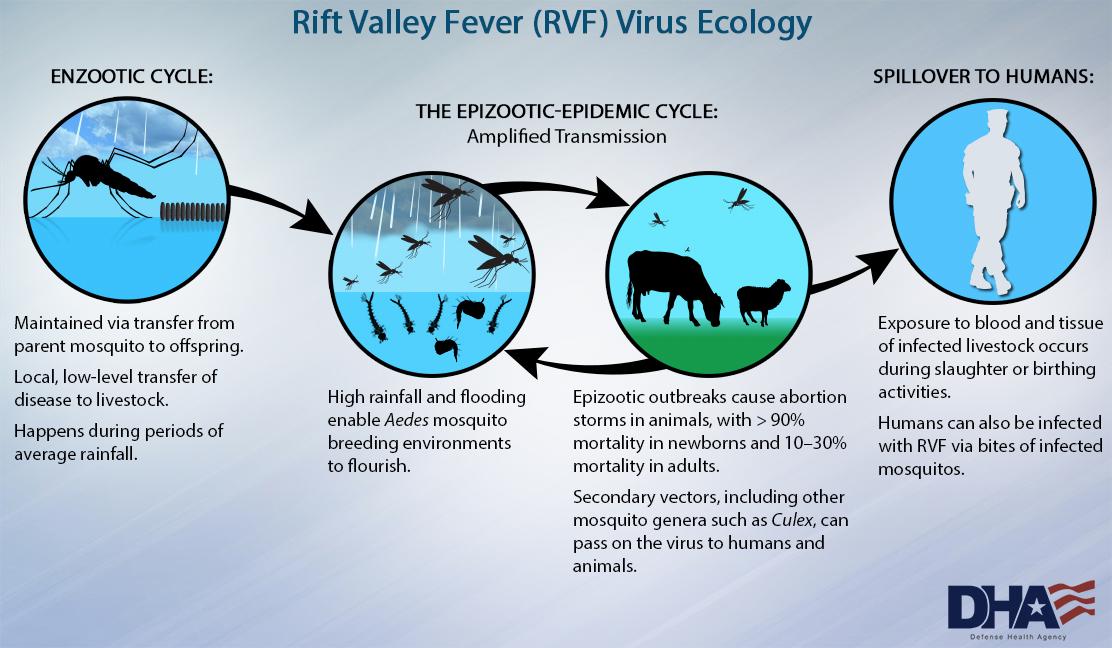 Drink fluids and rest.
Drink fluids and rest.
The illness is probably not serious if your child:
- Is still interested in playing
- Is eating and drinking well
- Is alert and smiling at you
- Has a normal skin color
- Looks well when their temperature comes down
Take steps to lower a fever if you or your child is uncomfortable, vomiting, dried out (dehydrated), or not sleeping well. Remember, the goal is to lower, not eliminate, the fever.
When trying to lower a fever:
- Do not bundle up someone who has chills.
- Remove excess clothing or blankets. The room should be comfortable, not too hot or cool. Try one layer of lightweight clothing, and one lightweight blanket for sleep. If the room is hot or stuffy, a fan may help.
- A lukewarm bath or sponge bath may help cool someone with a fever. This is effective after medicine is given — otherwise the temperature might bounce right back up.
- Do not use cold baths, ice, or alcohol rubs.
 These cool the skin, but often make the situation worse by causing shivering, which raises the core body temperature.
These cool the skin, but often make the situation worse by causing shivering, which raises the core body temperature.
Here are some guidelines for taking medicine to lower a fever:
- Acetaminophen (Tylenol) and ibuprofen (Advil, Motrin) help reduce fever in children and adults. Sometimes health care providers advise you to use both types of medicine.
- Take acetaminophen every 4 to 6 hours. It works by turning down the brain’s thermostat.
- Take ibuprofen every 6 to 8 hours. Do not use ibuprofen in children 6 months or younger.
- Aspirin is very effective for treating fever in adults. Do not give aspirin to a child unless your child’s provider tells you to.
- Know how much you or your child weighs. Then check the instructions on the package to find the correct dose.
- In children 3 months or younger, call your child’s provider first before giving medicines.
Eating and drinking:
- Everyone, particularly children, should drink plenty of fluids.
 Water, ice pops, soup, and gelatin are all good choices.
Water, ice pops, soup, and gelatin are all good choices. - In younger children do not give too much fruit juice or apple juice, and do not give sports drinks.
- Although eating is fine, do not force foods.
Contact a provider right away if your child:
- Is 3 months or younger and has a rectal temperature of 100.4°F (38°C) or higher
- Is 3 to 12 months old and has a fever of 102.2°F (39°C) or higher
- Is 2 years or younger and has a fever that lasts longer than 24 to 48 hours
- Is older and has a fever for longer than 48 to 72 hours
- Has a fever of 105°F (40.5°C) or higher, unless it comes down readily with treatment and the person is comfortable
- Has other symptoms that suggest an illness may need to be treated, such as a sore throat, earache, or cough
- Has had fevers come and go for up to a week or more, even if these fevers are not very high
- Has a serious medical illness, such as a heart problem, sickle cell anemia, diabetes, or cystic fibrosis
- Recently had an immunization
- Has a new rash or bruises
- Has pain with urination
- Has a weakened immune system (because of long-term [chronic] steroid therapy, a bone marrow or organ transplant, spleen removal, HIV/AIDS, or cancer treatment)
- Has recently traveled to another country
Contact your provider right away if you are an adult and you:
- Have a fever of 105°F (40.
 5°C) or higher, unless it comes down readily with treatment and you are comfortable
5°C) or higher, unless it comes down readily with treatment and you are comfortable - Have a fever that stays at or keeps rising above 103°F (39.4°C)
- Have a fever for longer than 48 to 72 hours
- Have had fevers come and go for up to a week or more, even if they are not very high
- Have a serious medical illness, such as a heart problem, sickle cell anemia, diabetes, cystic fibrosis, COPD, or other long-term (chronic) lung problems
- Have a new rash or bruises
- Have pain with urination
- Have a weakened immune system (from chronic steroid therapy, a bone marrow or organ transplant, spleen removal, HIV/AIDS, or cancer treatment)
- Have recently traveled to another country
Call 911 or the local emergency number if you or your child has a fever and:
- Is crying and cannot be calmed (children)
- Cannot be awakened easily or at all
- Seems confused
- Cannot walk
- Has difficulty breathing, even after the nose is cleared
- Has blue lips, tongue, or nails
- Has a very bad headache
- Has a stiff neck
- Refuses to move an arm or leg (children)
- Has a seizure
Your provider will perform a physical exam. This may include a detailed examination of the skin, eyes, ears, nose, throat, neck, chest, and abdomen to look for the cause of the fever.
This may include a detailed examination of the skin, eyes, ears, nose, throat, neck, chest, and abdomen to look for the cause of the fever.
Treatment depends on the duration and cause of the fever, as well as other symptoms.
The following tests may be performed:
- Blood tests, such as a CBC or white blood cell differential
- Urinalysis
- X-ray of the chest
Elevated temperature; Hyperthermia; Pyrexia; Febrile
- Colds and the flu – what to ask your doctor – adult
- Colds and the flu – what to ask your doctor – child
- Febrile seizures – what to ask your doctor
- When your baby or infant has a fever
- Thermometer temperature
- Temperature measurement
Leggett JE. Approach to fever or suspected infection in the normal host. In: Goldman L, Schafer AI, eds. Goldman-Cecil Medicine. 26th ed. Philadelphia, PA: Elsevier; 2020:chap 264.
Nield LS, Kamat D.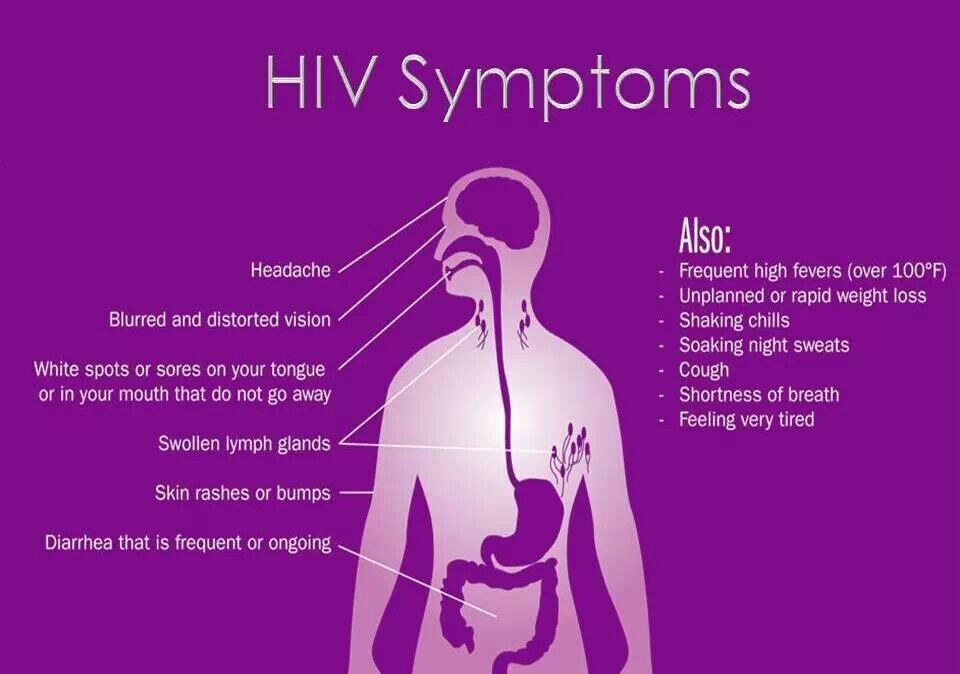 Fever. In: Kliegman RM, St. Geme JW, Blum NJ, Shah SS, Tasker RC, Wilson KM, eds. Nelson Textbook of Pediatrics. 21st ed. Philadelphia, PA: Elsevier; 2020:chap 201.
Fever. In: Kliegman RM, St. Geme JW, Blum NJ, Shah SS, Tasker RC, Wilson KM, eds. Nelson Textbook of Pediatrics. 21st ed. Philadelphia, PA: Elsevier; 2020:chap 201.
Updated by: Neil K. Kaneshiro, MD, MHA, Clinical Professor of Pediatrics, University of Washington School of Medicine, Seattle, WA. Also reviewed by David C. Dugdale, MD, Medical Director, Brenda Conaway, Editorial Director, and the A.D.A.M. Editorial team.
Treat High Fever in Children and Adults
- Online Care
- Scheduled Care
- Locations
- Careers
- Pay My Bill
- Testimonials
Eagan, Woodbury and Vadnais Heights
Contact UsCareersFAQsUR Blog
The Urgency Room is your comprehensive one-stop location for your urgent needs. Our standalone facilities are expertly outfitted with emergency trained providers and state-of-the-art equipment to handle the variety of aches, pains, breaks, and illnesses that come through our doors every day.
Our standalone facilities are expertly outfitted with emergency trained providers and state-of-the-art equipment to handle the variety of aches, pains, breaks, and illnesses that come through our doors every day.
Schedule an appointment at any of our three locations, open 365 days a year, including holidays, from 8:00 AM to 9:00 PM. Our telehealth services are available from 8:00 AM to 8:00 PM. Situated in Woodbury, Vadnais Heights, and Eagan, The Urgency Room is the quick and convenient alternative to overcrowded and understaffed emergency rooms for residents throughout the Twin Cities.
If you or your child has a high fever, don’t hesitate to seek care. Don’t drudge through hours of waiting at your typical emergency room. Instead, get evaluated and treated at your nearest Urgency Room, fast. With short wait times, friendly staff, and highly experienced providers, you’ll be back to yourself in no time.
What Is Considered a High Fever in Adults?
Most adults have a baseline temperature of 98. 6 F. Generally, temperatures of 103 degrees Fahrenheit or higher are considered high for an adult. However, when an adult sustains a temperature higher than 100 degrees Fahrenheit for an unusually long period of time, it could also be cause for concern. It’s best to act on the safe side and seek care at The Urgency Room right away. Fevers can be very complex and can stem from many different types of illnesses or infections. The providers at The Urgency Room can accurately assess and diagnose the source of your high fever.
6 F. Generally, temperatures of 103 degrees Fahrenheit or higher are considered high for an adult. However, when an adult sustains a temperature higher than 100 degrees Fahrenheit for an unusually long period of time, it could also be cause for concern. It’s best to act on the safe side and seek care at The Urgency Room right away. Fevers can be very complex and can stem from many different types of illnesses or infections. The providers at The Urgency Room can accurately assess and diagnose the source of your high fever.
Fevers occur when the hypothalamus, your body’s “thermostat,” increases your body’s temperature because of fever-producing substances called pyrogens. When pyrogens are released into your blood, you could wind up with a dangerously high fever. Pyrogens could come from bacteria, drugs, toxins, viruses, and fungi. The severity of fever and its detrimental results increase as your condition persists—which is why getting a high fever treated sooner is always your best option.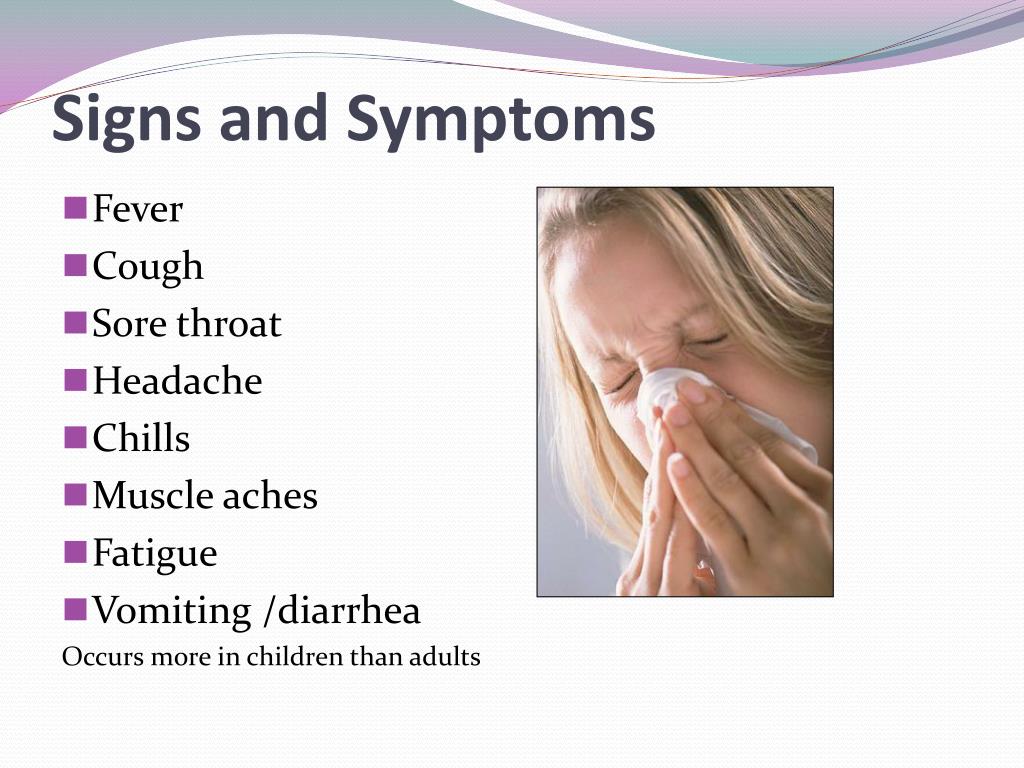
High Fever Thresholds
Once a fever goes beyond the high level, an adult enters dangerous fever levels (104 F – 107 F). This dangerous level, also known as hyperpyrexia, is considered a medical emergency and you should seek medical care immediately.
To give you a rough idea of the fever levels in adults, here’s a list:
- Low high fever: 100 F – 101 F
- Intermediate high fever: 102 F
- Serious high fever: 103 F – 104 F
- Hyperpyrexia: 104 F – 107 F
It is sometimes difficult to pinpoint the source of a fever as there are an incredible number of diseases and illnesses that have high temperatures as a side effect or symptom. And while fevers most frequently accompany a viral illness, our providers will try and get down to the exact source.
What Is Considered a High Fever in Children?
A high fever in a child may be any temperature higher than 100 degrees Fahrenheit, especially if that temperature is sustained above the 100-degree threshold for extended periods. If your child’s temperature is not showing signs of reducing, you should seek emergency care.
If your child’s temperature is not showing signs of reducing, you should seek emergency care.
The severity and damage a fever can cause vary by the age of the child. Younger children and infants should be seen by a medical provider sooner than an adult or teenager would with a similar temperature.
In addition to high or rising temperatures that last longer than 24 hours, a child with a high fever could have other obvious symptoms. Be on the lookout for severe diarrhea, dehydration, repeated vomiting, seizures, or rash. Your child is especially susceptible to serious infections if they have any type of immune disorder or haven’t received immunizations.
When minutes matter, especially if your child has a high fever, get to your nearest Urgency Room—we have shorter wait times and state-of-the-art equipment to treat your illness fast.
When Is It Time to Seek Care?
As listed above, the duration one with a high fever should wait to seek medical treatment varies depending on age. An infant should be seen right away even if it has temperatures constituting a low fever in adults. Similarly, an adult can wait until the fever persists for a day or two while a child, depending on its age, should be seen as soon as they’ve had a fever of any temperature for longer than 24 hours.
An infant should be seen right away even if it has temperatures constituting a low fever in adults. Similarly, an adult can wait until the fever persists for a day or two while a child, depending on its age, should be seen as soon as they’ve had a fever of any temperature for longer than 24 hours.
You may try fever-reducing medicines (ones containing acetaminophen) before seeking medical care, however, always consult with a medical provider if you are uncertain what medicine to administer for your child.
Consider Using Telehealth for Less Intense Fevers
If you’re not experiencing a medical emergency but you’re concerned about your fever level or that of your child, consider using online care services. The Urgency Room utilizes video technology for patient convenience and overall experience improvement. You won’t have to waste precious time in your vehicle or using public transportation, not to mention waiting in the lobby. Just follow the instructions on our Online Care page.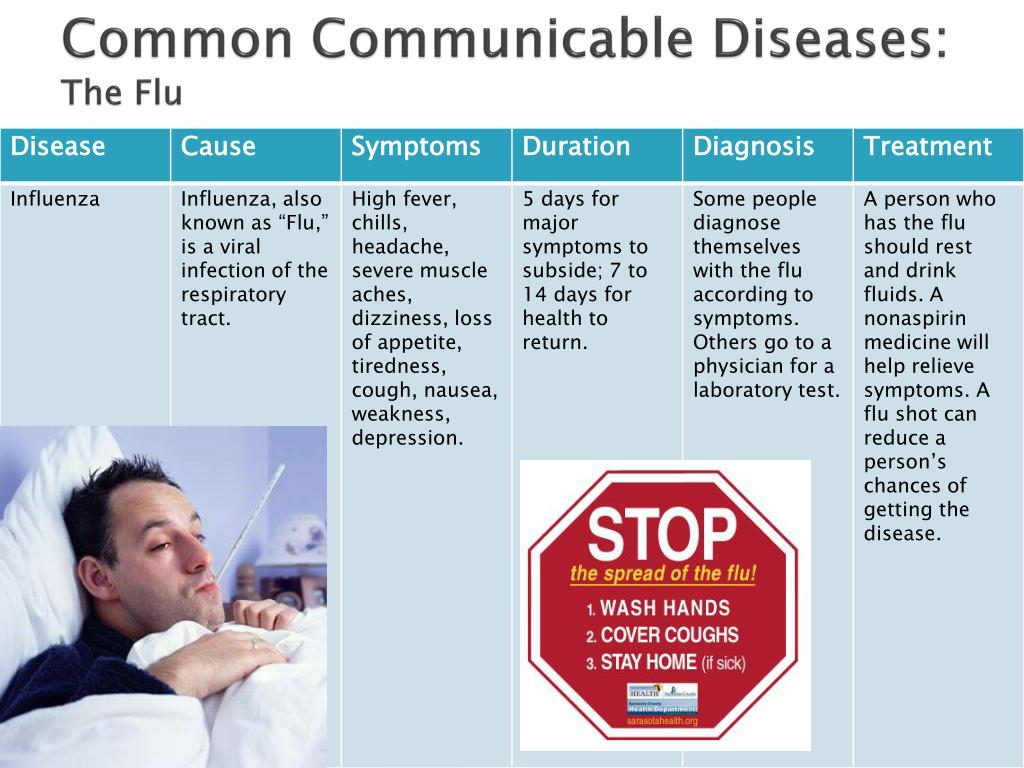
How Can The Urgency Room Treat High Fevers in Adults and Children?
The Urgency Room is well-equipped to take care of you or your child when experiencing a high fever. Prolonged fever or dangerously high fevers can cause an onslaught of residual health problems, so it is always best to seek care rather than ignore the problem.
All three Urgency Room locations are equipped with providers and staff who have extensive emergency room experience as well as equipment to assess, diagnose and treat your illness or injury.
Up-to-date technology at our Urgency Room locations includes:
- X-ray machines
- CT scanner
- Ultrasound
- High-complexity lab
- Sedation for adults and children
The Urgency Room also has a large library of at-home aftercare videos for you to reference after you’ve left our in-person care. Before, during, and after illness, The Urgency Room has your well-being as our first priority.
Medical Care for a Wide Range of Symptoms, Available In-Person or Online
Looking for fast, trusted medical care in the Twin Cities? The Urgency Room can help you avoid the crowds and long waits of typical emergency rooms. Our facilities are owned and operated by members of the Emergency Physicians Professional Association. Our board-certified physicians and staff are here for you when you need medical care the most.
Our facilities are owned and operated by members of the Emergency Physicians Professional Association. Our board-certified physicians and staff are here for you when you need medical care the most.
We’ll always provide you with exceptional medical care closer to home. Schedule your non-emergent visits or log in online to start a visit with one of our providers online.
Fever
The state of the body, characterized by a rise in body temperature above normal, is called fever. Normally, the temperature of the human body is maintained at a level of about 37 ° C, however, in some (often infectious) diseases, a protective and adaptive reaction occurs, which is based on an increase in body temperature with the obligatory preservation of the thermoregulation mechanism. This property is a hallmark of fever from hyperthermia (overheating). Pyrogens cause fever – substances that enter the body during infection (exogenous pyrogens) or are formed by cells of the immune system as a result, for example, of inflammation (endogenous pyrogens).
Fever always passes in three stages:
- Rise in temperature – blood vessels constrict, skin becomes pale, there is a feeling of chills, muscle tremors, metabolism in muscles increases. At this stage, heat production is much higher than heat transfer.
- Temperature retention – the mechanisms of heat production and heat transfer are balanced – the temperature can be fixed for hours, days or weeks. Skin vessels dilate, the skin ceases to be pale and becomes hot to the touch, chills and trembling go away. At this time, a person experiences a feeling of heat.
- Drop in temperature – either a sharp or gradual decrease in body temperature is possible. At this stage, heat transfer significantly exceeds heat production, profuse sweating occurs and diuresis increases. This stage begins in case of exhaustion of exogenous reserves or cessation of production of endogenous pyrogens.
There are several types of fever:
- Remittent (laxative) type is characterized by diurnal changes in temperature, which does not drop to normal;
- Intermittent (intermittent) type characterized by rapid diurnal fluctuations in temperature, which falls to normal and rises again;
- Constant fever – slight fluctuations in elevated temperature during the day;
- Relapsing fever – constantly elevated temperature for one or more days, then its reduction to normal and repeated increase;
- Perverse fever – a rise in temperature in the morning is characteristic;
- Incorrect fever – temperature fluctuation during the day occurs without any dependence.

Most often, fever indicates the presence of an infectious disease, but it can also be a symptom of cancer.
Fever is treated by identifying and eliminating the source of the infection. If necessary, fever is removed with the help of antipyretics: Nurofen, Aspirin . For children, Nurfen suspension , Panadol suppositories are recommended. Also, to reduce the temperature, you can use alcohol compresses or cold lotions, body wraps and immersion in a cold water bath.
Pankratova Evgenia Igorevna
The material is for informational purposes only. Medicinal products, biologically active supplements and other products are indicated as an example of their possible use and / or application, which in no way constitutes a recommendation for their use. Before using drugs, dietary supplements and medical equipment and other products, be sure to consult a specialist.
Influenza leaflet | Ministry of Health of the Kaliningrad Region
We are sick correctly. Five mistakes in the treatment of influenza and SARS, and how to avoid them
Five mistakes in the treatment of influenza and SARS, and how to avoid them
The day before yesterday I had a sore throat, but hot tea seemed to help. Yesterday the nose stopped breathing, but there was so much work, there was not even enough time to go to the pharmacy for drops.
This morning it became clear that that’s all – the disease has completely captured the body. We urgently need to take action!
Thus begins a series of mistakes that most people make, instead of the path to recovery, choosing the path to a protracted illness and complications.
We’ll talk about five common misconceptions and explain why you shouldn’t.
Mistake one: no time to get sick
We have all become very busy: we have a million things to do and responsibilities. There is no time to get sick, so we pour medicines into ourselves on the run that relieve symptoms, turn off liters of hot tea, and it seems that the disease is receding. Often, unfortunately, it really only seems so . .. In a few days, everything can manifest itself again, and, most likely, in an enhanced form. If you do not pay attention to the disease again, it is easy to reach serious complications.
.. In a few days, everything can manifest itself again, and, most likely, in an enhanced form. If you do not pay attention to the disease again, it is easy to reach serious complications.
All I had to do was stay at home and call a doctor. For 3-4 days of rest and taking the medicines prescribed by the doctor, the body, not too tortured by life, usually copes with the disease.
Error two: bring down low temperature
Yes, we understand that fever is a headache and a cloudy state. Therefore, the majority rushes to drink antipyretics as soon as they see the numbers 37 with a tail on the thermometer. And it would be necessary to rejoice in the increase in body temperature. After all, this is a sign that the immune system is working, the body is fighting the disease. Remember: you do not need to bring down the temperature if it is below 38.5 degrees. Of course, this does not apply to cases where the patient has a severe headache or has a tendency to convulsions.
Error three: wrapping up and closing all windows
With a cold or flu, the patient often gets chills, and his only desire is to wrap himself in ten blankets. What he does, having previously closed all the windows in the apartment. Don’t do it! Wrap yourself in the eleventh blanket, but be sure to ventilate! This will help reduce the concentration of viruses and normalize the microclimate in the room. If you can’t stand even a slightly ajar window at all, leave the room every 2-3 hours, open the window wide open for five minutes (yes, even if it’s winter), then return to a well-ventilated room.
What he does, having previously closed all the windows in the apartment. Don’t do it! Wrap yourself in the eleventh blanket, but be sure to ventilate! This will help reduce the concentration of viruses and normalize the microclimate in the room. If you can’t stand even a slightly ajar window at all, leave the room every 2-3 hours, open the window wide open for five minutes (yes, even if it’s winter), then return to a well-ventilated room.
Mistake four: drinking antibiotics
You tried to get rid of the symptoms, but it’s still bad… Treated with home remedies – not much better… “What’s wrong!”, you exclaim and go to the pharmacy for antibiotics. Stop! Turn around home. Doctors are already tired of explaining that antibiotics work against bacteria, while flu and colds are viral diseases. So drink in vain. Harm the stomach, but you can’t cope with the disease. But even in the case of a bacterial infection, antibiotics should be prescribed by a doctor. Recently, bacteria have developed resistance to many drugs, and whether one or the other will help in your case, you can’t guess for sure. By taking antibiotics thoughtlessly, you will accustom bacteria to them, and they will no longer be afraid of them.
By taking antibiotics thoughtlessly, you will accustom bacteria to them, and they will no longer be afraid of them.
The fifth mistake, and the most important one: it will go away on its own…
These four points might not exist if we were more serious about observing hygiene rules, proper prevention and competent treatment of any diseases. And it’s not difficult. Airborne viruses enter our body through the mucous membrane of the nasopharynx. If it is weakened or damaged, the viruses become attached to it and begin to multiply. Immunity can not cope and diseases develop: from simple, as we believe, colds to tonsillitis, bronchitis, pneumonia. In fact, even a common cold is often the beginning of a road to more serious ailments. That is why it is so important to properly strengthen the immune system and defend against viruses.
We hope that our advice will help you improve your health, and if you get sick, it is not often and not hard!
In the Russian Federation, the epidemic season of influenza and SARS continues, which is typical for this time of year.
The causative agents of influenza and SARS are transmitted from person to person by airborne droplets and are quite contagious (contagious).
With ARVI – acute respiratory viral infections of non-influenza etiology, the disease develops gradually, most often begins with fatigue and a runny nose, dry cough, which then turns into a wet one.
With influenza, there is a sharp deterioration in the condition – an increase in body temperature (in some cases up to 40.5 degrees), headache, “ache” in the muscles and joints, sensitivity to light. The most active phase falls on the 3rd-5th day of the disease, recovery on the 8th-10th day. The flu affects the blood vessels, so bleeding of the gums and nasal mucosa is possible. After suffering the flu, the body becomes extremely susceptible to various infections, which leads to severe infectious complications.
SARS and influenza are especially severe in young children, the elderly, people with chronic pathologies and diseases of the immune system.
The best protection against the flu is immunization. However, the vaccine does not protect against other SARS.
In order to prevent disease, it is necessary to strengthen and harden your body. Get enough sleep, observe the regime of work and rest, try to be in the fresh air more. Going for a walk, dress for the weather, try not to get cold when you are outside. If you get your feet wet, you need to steam them as soon as you return home.
Proper nutrition contributes to strengthening the body. Include in the diet foods containing vitamins A, C, zinc and calcium: citrus fruits, kiwi, sweet peppers, dairy and sour-milk products, hard cheeses, boiled fish, beef, carrots with sour cream, raisins or dried apricots, etc.
When planning to visit public places, take a medical mask with you: if you sneeze and cough in a public place, cover your mouth and nose with a medical mask or handkerchief – this will help prevent infection.
Any viral disease transferred “on the legs” can lead to undesirable consequences and complications in the future.

 These cool the skin, but often make the situation worse by causing shivering, which raises the core body temperature.
These cool the skin, but often make the situation worse by causing shivering, which raises the core body temperature.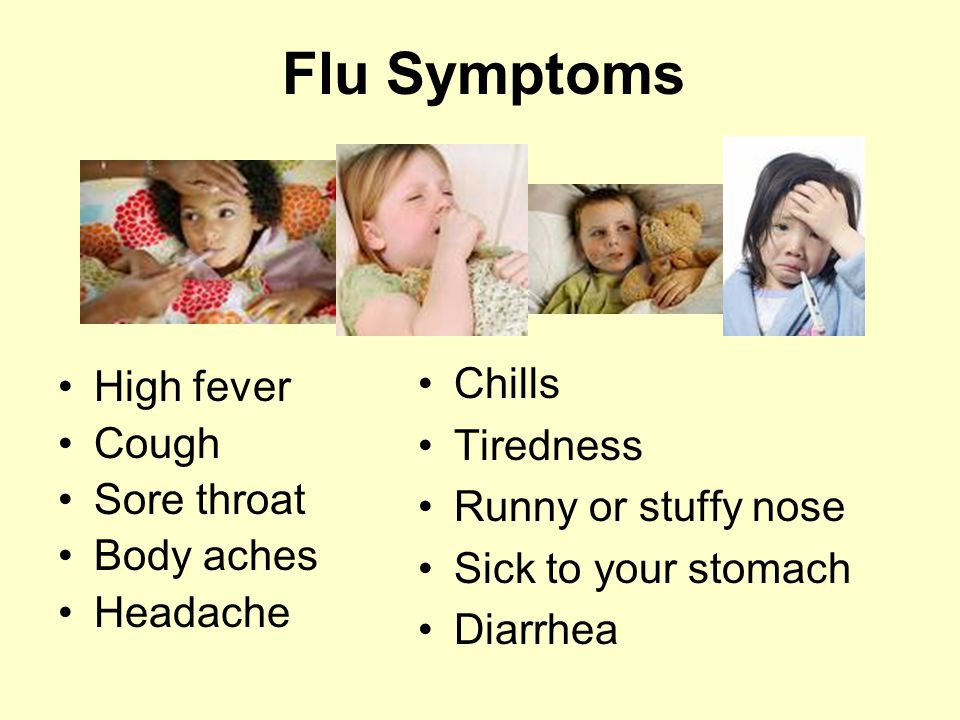 Water, ice pops, soup, and gelatin are all good choices.
Water, ice pops, soup, and gelatin are all good choices. 5°C) or higher, unless it comes down readily with treatment and you are comfortable
5°C) or higher, unless it comes down readily with treatment and you are comfortable